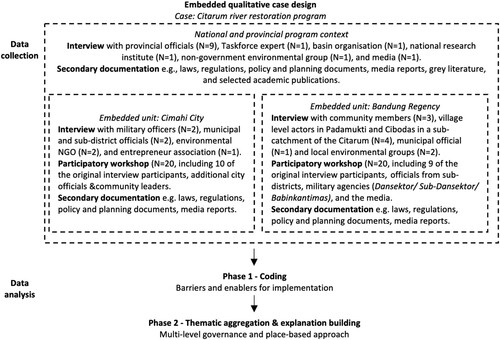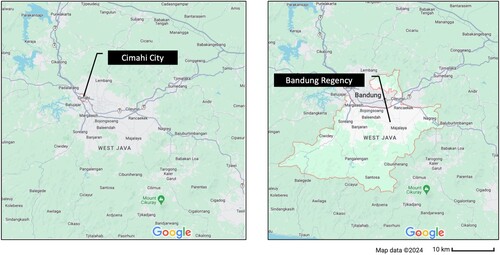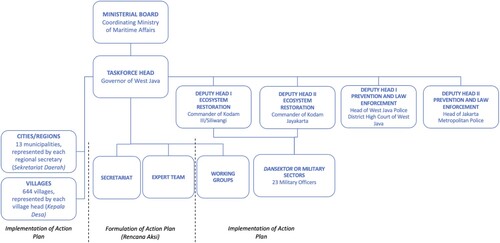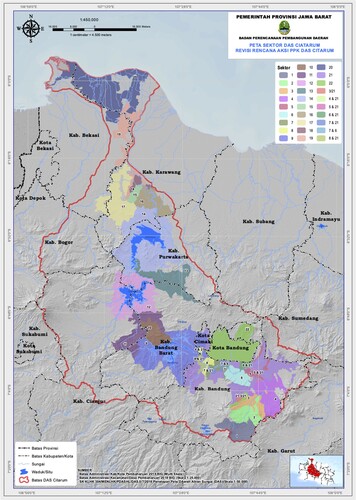Figures & data
Table 1. Types of multi-level governance.
Figure 1. Research design.

Figure 2. Locations of embedded cases: Cimahi City and Bandung Regency (red lines show administrative boundaries).
Source: Google (2024) Cimahi City and Bandung Regency. Available at https://maps.google.com.

Figure 3. Formal coordination structure of the Citarum Taskforce.
Source: Adapted from Citarum Taskforce coordination and implementation directives outlined in Presidential Regulation No.15/2018 and Citarum Action Plan 2019–2025.

Table 2. Connecting multi-level governance with place-based conditions.
Figure 4 Military sectors in Citarum.
Source: Citarum Taskforce, Citation2021.

